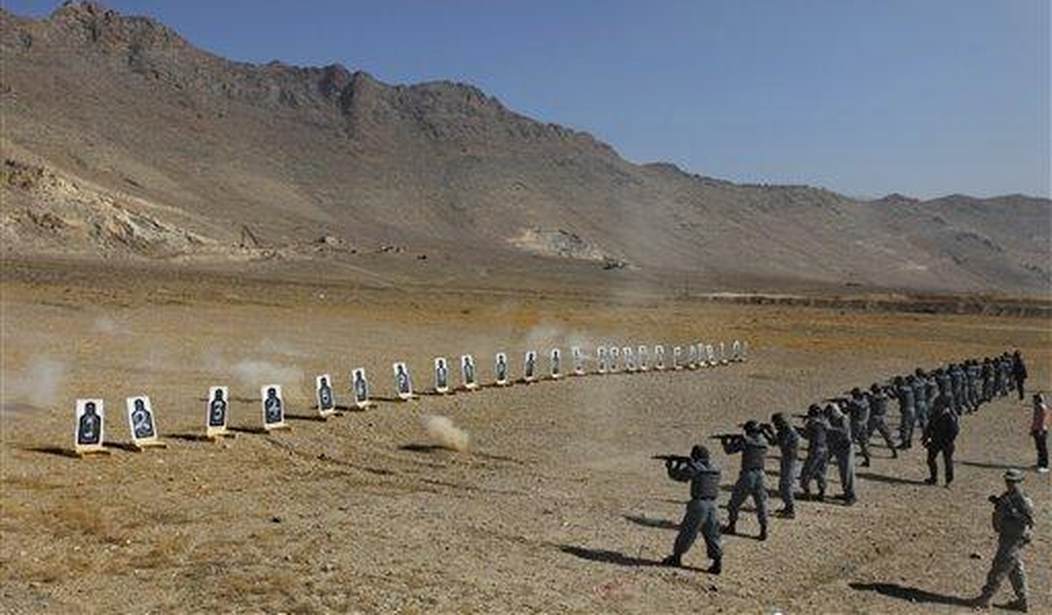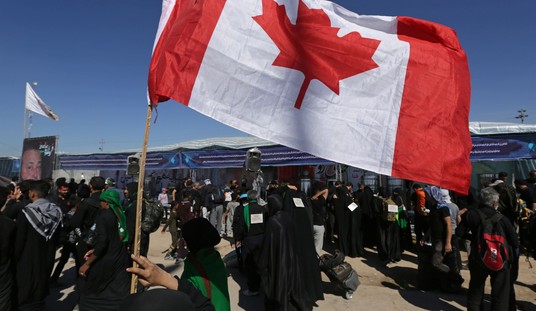This week, the Associated Press featured the story of Olha Dembitska, a Ukrainian woman living in Czechia, who has been monitoring the ongoing horror show in her home country and has decided that she will probably have to do something about it. She’s been receiving updates over social media from a girlfriend of hers in Kherson, where Russian troops have been abducting, raping, and killing the local women. It’s all become too much for her. Now she’s been taking free shooting lessons that the Czechs are offering to any Ukrainians who may wish to return home and fight for their nation. Olha had never touched a firearm before this and her first efforts at firing an AK-47 at a paper target didn’t go well. But she’s getting better at it.
Of the first four shots Olha Dembitska fired from an AK-47 assault rifle in her life, one hit the target. “It’s pretty difficult the first time,” the 22-year-old Ukrainian woman acknowledged.
On this occasion, the target was the shape of a human body at a shooting range in the Czech Republic. Next time, it might be for real, in Ukraine, and the target could be one of the Russian troops who have invaded her homeland.
Dembitska is one of at least 130 men and women who have so far undergone free-of-charge training for Ukrainians living in the Czech Republic who want to learn how to fight the aggressor.
The students receiving the free lessons are getting more than just target practice. They are learning about basic firearms cleaning and maintenance. There is also training in fundamental infantry movements and strategy, as well as basic battlefield first aid for themselves and others. In short, it’s a crash course on becoming a soldier in a hot war for people who had never before imagined themselves going to war. Based on many reports that have come out of Ukraine lately, Olha may be better trained than many of the Russian conscripts being sent into her home country.
Dembitska and her fellow students may have to move fast. A U.S. Defense Department official described the escalating battles in the Donbas region as a “knife fight.” There has been ongoing fighting there between Ukrainians and Russian separatists since 2014. Now the Russian army is moving in from both the north and the south, while Ukrainian forces surge in from the west to buttress the defense of the area. The Ukrainians may have mother nature on their side, however. As has been predicted for months, the spring rains have begun and the Russian army may be unable to move their tanks and personnel carriers through a growing sea of mud.
Meanwhile, another global impact of the war in Ukraine is being felt. Agricultural work in the country has essentially ground to a halt and the global fertilizer shortage is getting worse. That’s bad for not only Ukrainian farmers, but for agricultural businesses around the world, including in the United States.
Higher fertilizer prices are making the world’s food supply more expensive and less abundant, as farmers skimp on nutrients for their crops and get lower yields. While the ripples will be felt by grocery shoppers in wealthy countries, the squeeze on food supplies will land hardest on families in poorer countries. It could hardly come at a worse time: The U.N. Food and Agriculture Organization said last week that its world food-price index in March reached the highest level since it started in 1990.
The fertilizer problem is a major issue and it could lead to even more expensive groceries for everyone, as well as even more empty shelves in the grocery markets. But for Ukraine’s farmers, this is unfortunately not a time to be sowing their crops. What everyone is waiting to see is whether or not the Russians can be beaten back or at least bogged down yet again. If they fail to take any territory in Ukraine when this is over, it will be one of the greatest military debacles in several generations. How Vladimir Putin’s rule of Russia continues after such an embarrassing outcome remains to be seen.








Join the conversation as a VIP Member